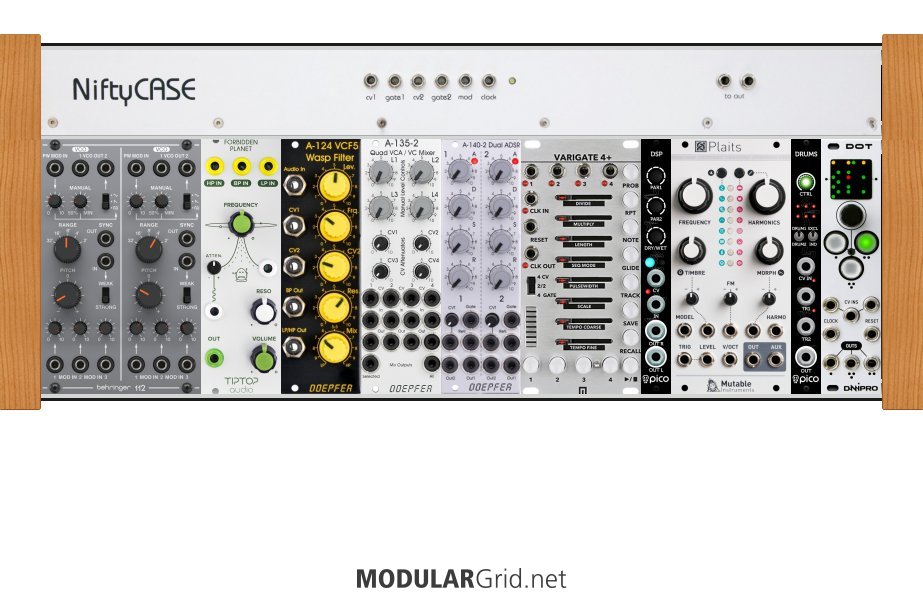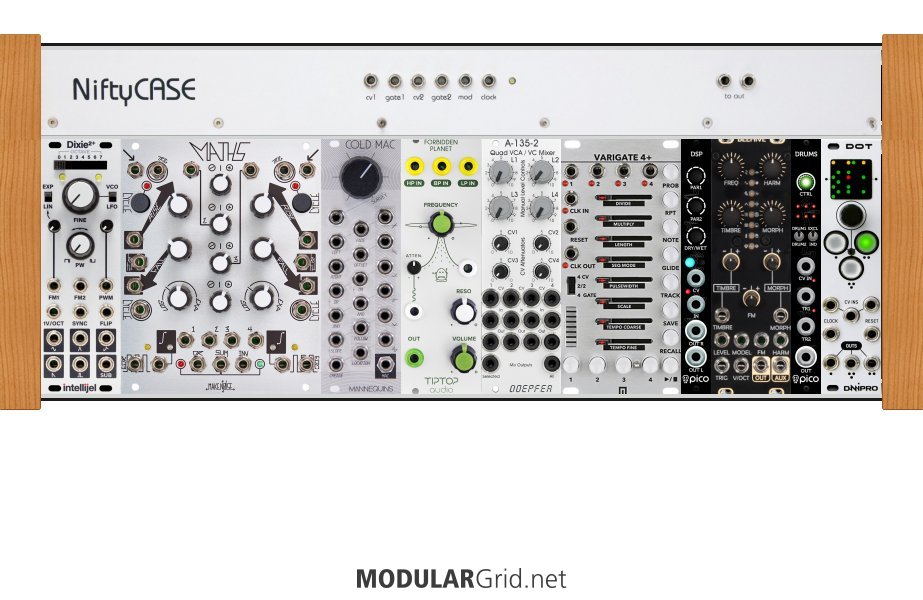Hello everyone,
as the titles says, I am new in the modular world, and after reading the forum for a while, watching hours of reviews in Youtube, etc...I can say I am still a little bit lost, but anyway I tried to create what for me would be a small modular Groove box (if that exists...) on a budget. Currently I own a Dreadbox Typhoon, an Elektron Cycles, few Volcas and a Keystep as main controller.
I would like to know if what I created makes any sense to you, and if not, what should be changed (I am aware that in a small rack like this one, the options for modulation are quite reduced, with two VCOs and couple of drums):
A: the tonal part
Case: The Nifty case, which seems fine having already a Keystep to send midi. About the size, I know the bigger the better, but for now and considering the available space I have in my desk, is enough.
VCO: The dual VCO 112 from Behr, I know the first batch had some issues with tuning, but it seems it has been fixed already. For the price, it is a no brainer for me. I was checking also Dreadbox chromatic VCO but few people were complaining about the sound and tuning.
Filters: The Forbidden Planet , as recommended in many posts and at good price; and to have some extra filter options, the Doepfer Wasp Filter.
VCA: Doepfer Quad VCA, also as a Mixer.
ADSR: Doepfer dual ADSR.
Sequencer: although having already an external sequencer via midi (Elektron Cycles and Keystep), I want to include a sequencer in the rack, to have an standalone unit. After some readings and always considering the budget, I opt for the Variagate 4, to sequence both VCO´s.
B: the drum part.
- Plaits, for its versatility in sounds, a swiss knife.
- Pico Drums, with two independent voices.
- DOT, to sequence Plaits and Pico Drums.
so, makes any sense?
Thanks for your time!!!!



